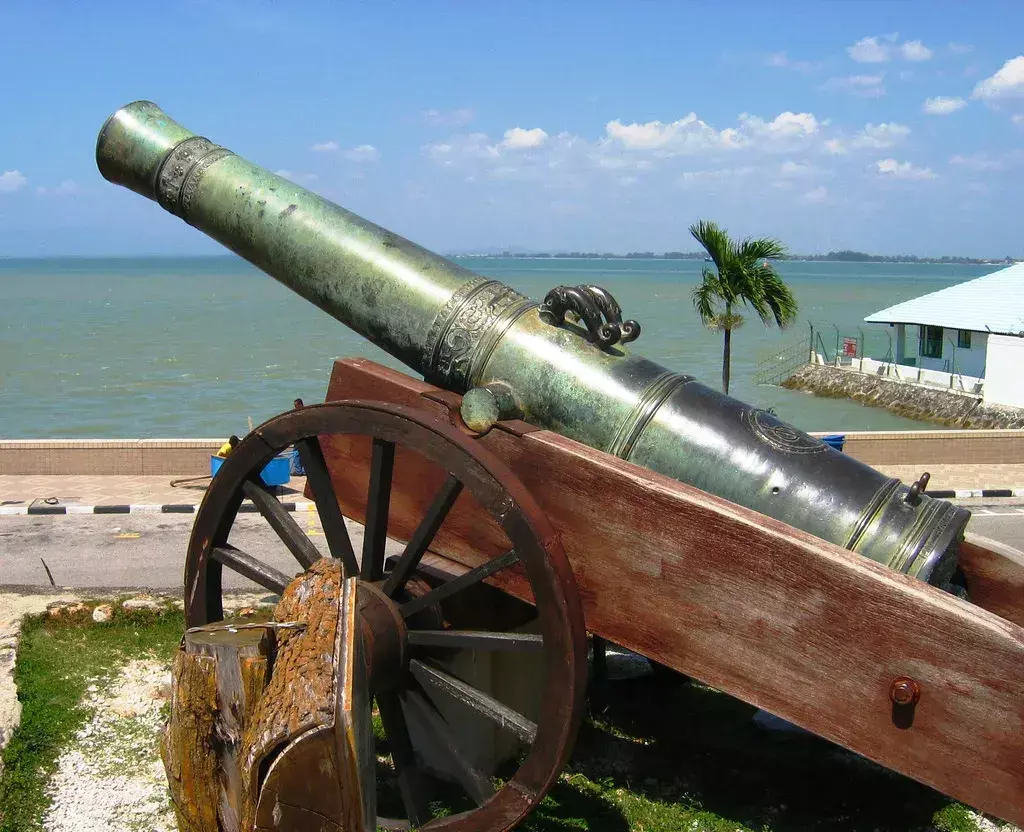
Women Seek Blessings of 17th-Century Cannon Said to Aid Conception
In the heart of Malacca, Malaysia, a 17th-century cannon stands tall, but its significance goes beyond its historical value. The Seri Rambai cannon, once a Dutch war weapon, has become a spiritual icon, sought after by women hoping to conceive. Located within the walls of Fort Cornwallis, this historic relic is worshipped with seven-colored flowers, believed to possess aphrodisiac powers that can aid in fertility.
Fort Cornwallis, a UNESCO World Heritage Site, is a testament to the region’s rich history. Built by the British in the 18th century, the fort has witnessed the rise and fall of empires. However, it is the Seri Rambai cannon that holds a special place in the hearts of locals and visitors alike. According to legend, the cannon was cast in 1641 during the Dutch era, and its metal is said to possess magical properties that can enhance fertility.
The story of the Seri Rambai cannon’s transformation from a symbol of war to one of hope, life, and motherhood began several decades ago. Local women, desperate to conceive, would visit the cannon, placing seven-colored flowers at its base. As the years passed, they began to report pregnancy and the birth of healthy children. Word of the cannon’s supposed fertility powers spread, and soon, women from all over Malaysia were flocking to Fort Cornwallis, seeking the blessing of the Seri Rambai cannon.
The cannon’s unusual significance is not just limited to its supposed aphrodisiac powers. The seven-colored flowers, which are typically arranged in a specific pattern around the cannon, are believed to enhance the effectiveness of the blessing. The flowers, which include red, orange, yellow, green, blue, indigo, and violet, are said to represent the seven chakras, or energy centers, in the human body.
Visitors to Fort Cornwallis can see the Seri Rambai cannon, adorned with a vibrant display of flowers, almost every day. Women, often accompanied by their husbands or partners, approach the cannon with reverence, lighting incense sticks and making silent prayers. Some may even leave behind offerings, such as candles, fruit, or small toys, in hopes of securing the cannon’s blessing.
The story of the Seri Rambai cannon has also attracted the attention of tourists and scholars. While some may view the practice as superstition, many others see it as a testament to the power of faith and the human desire for family and connection.
Dr. Ng, a local historian, believes that the cannon’s significance extends beyond its supposed fertility powers. “The Seri Rambai cannon is a symbol of hope and resilience,” she explains. “It reminds us that even in the face of adversity, there is always the possibility of new life and new beginnings.”
As the years go by, the legend of the Seri Rambai cannon continues to grow. Women from all over the world now visit Fort Cornwallis, seeking the blessing of this 17th-century cannon. While the cannon’s powers may be disputed, there is no denying its impact on the lives of those who visit it. For many, the Seri Rambai cannon has become a source of comfort, a reminder that even in the darkest of times, there is always hope for a brighter future.
Source:



